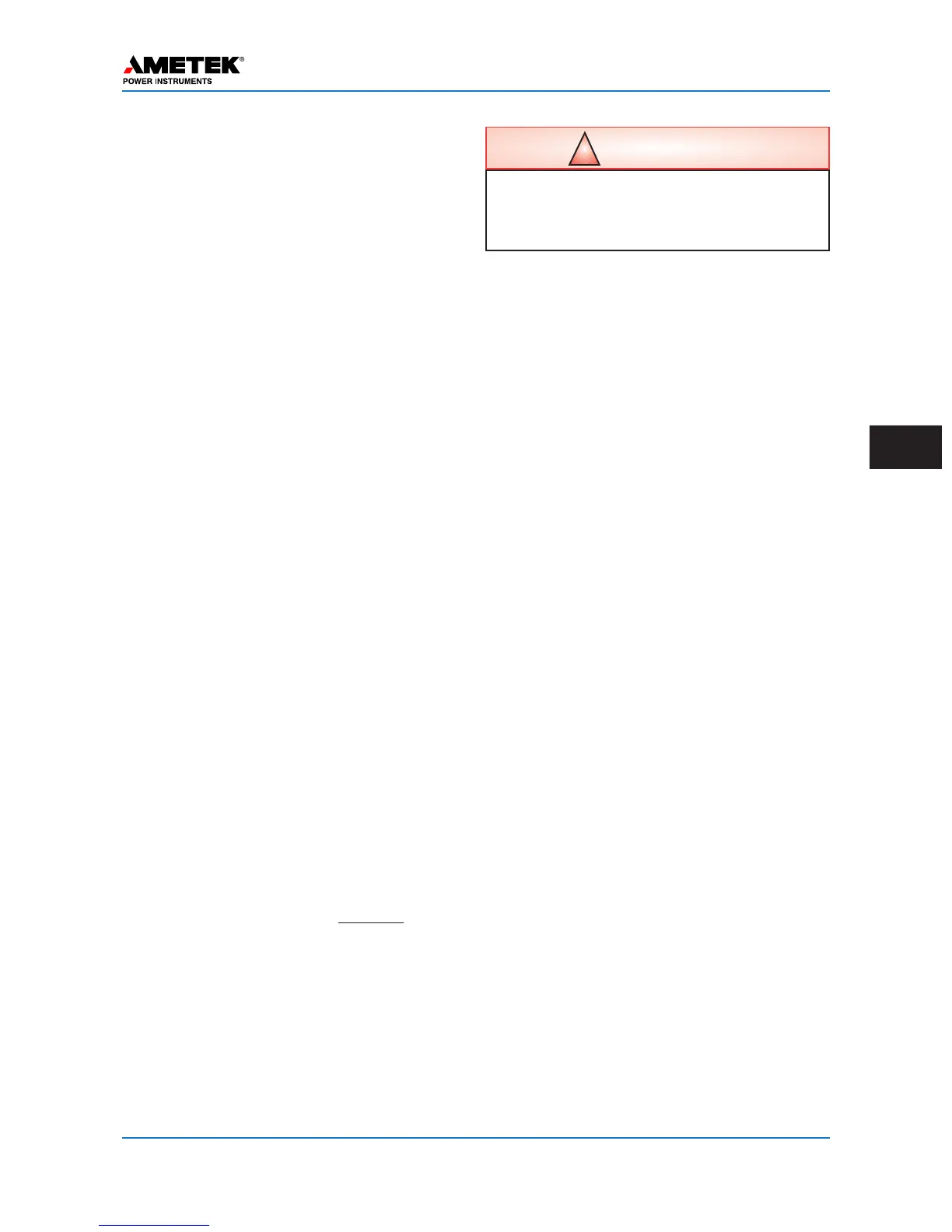January 2016 Page 6–13
Chapter 6. Testing Facilities
6
FSK Mode Trip Test Feature
Trip Test Inputs/Outputs, Web pages and timing
diagrams are at the end of the chapter.
6.6 General Description
The optional Trip Test is designed to test FSK
two-frequency or three-frequency mode and is
compatible with the TCF-10B’s Trip Test option.
Two transmitters with trip test, one at each end of
the line, are needed to perform this testing func-
tion.
Trip testing will only work on 2-terminal lines and
is not functional on 3-terminal lines or more.
The Trip Test can be used to functionally test the
transmitters and receivers at both ends of a two
terminal line with having only a person at one end.
The Trip Test on the UPLC-II™ works in conjunc-
tion with the local receiver as well as the remote
receiver and transmitter to test the ability of the
system to shift the transmitter to the trip frequency
and receive the trip frequency at the opposite end.
For 2-frequency FSK systems, the trip test can be
set for a “real” trip or a “checkback” trip. The
“real” trip will produce an output of the receiver
logic TRIP. A “Checkback” Trip setting will pro-
vide only a checkback trip output from the receiv-
er logic, which can be used to pick up an auxiliary
relay or indicating light. Only the “checkback”
trip setting can be used for 3-frequency systems.
6.6.1 Two Frequency Applications
Real Trip Scenario
Please refer to the timing diagrams at the end of
the chapter.
In this application, the local end, at which you ini-
tiate a Trip Test, will receive a real TRIP
as well
as a CHECKBACK TRIP, but the remote end will
only produce a CHECKBACK TRIP. When using
this application the end that initiates the trip would
have to be disconnected from the trip relays.
When a trip test is initiated, the local transmitter
shuts down for 2 seconds. The remote end receiv-
er will see this as a loss of channel. After 2 sec-
onds, the local transmitter then keys to the trip fre-
quency for 2 seconds. The remote end recognizes
this as a Trip Test command and the remote
receiver will then produce a CHECKBACK TRIP
and key the remote transmitter to the trip frequen-
cy for 2 seconds. The local end receiver sees that
as a REAL TRIP and produces a TRIP and
CHECKBACK TRIP output.
6.6.2 Two Frequency Application
Checkback Trip Scenario
In this application, both the local and remote ends
shift to “checkback” trip. No trip outputs have to
be disconnected.
When a trip test is initiated, the local transmitter
shuts down for 1.5 seconds. The remote end
receiver will see this as a loss of channel. After 1.5
seconds, the local transmitter then keys to the trip
frequency for 0.5 second. The remote end recog-
nizes this as a Trip Test command and the remote
receiver will then produce a CHECKBACK TRIP
and shut down the remote transmitter for 2 sec-
onds. The remote transmitter is then keyed to the
trip frequency for 0.5 second. This in turn pro-
duces a loss of channel and CHECKBACK TRIP
(without a real TRIP) at the local end.
6.6.3 Three Frequency Applications
Checkback Trip Scenario
In this application, both the local and remote ends
shift to “checkback” trip. No trip outputs have to
be disconnected. Both trips, DTT & LR
(unblock/POTT) are tested. DTT is low frequency
and LR (unblock/POTT) trip is high frequency.
When a trip test is initiated, the local transmitter
shuts down for 1.5 seconds. The remote end
receiver will see this as a loss of channel. After 1.5
seconds, the local transmitter then keys to the
lower trip frequency for 0.5 second. The remote
end recognizes this as a Trip test command and the
remote receiver will then produce a CHECK-
• If the unit is set for a real trip, then caution should be taken to
o
pen the trip circuit path so as not to mistakenly trip out a break-
e
r or lockout relay on a Direct Transfer Trip system.
•
The required logic must be set for “GUARD BEFORE TRIP”.
CAUTION
!
